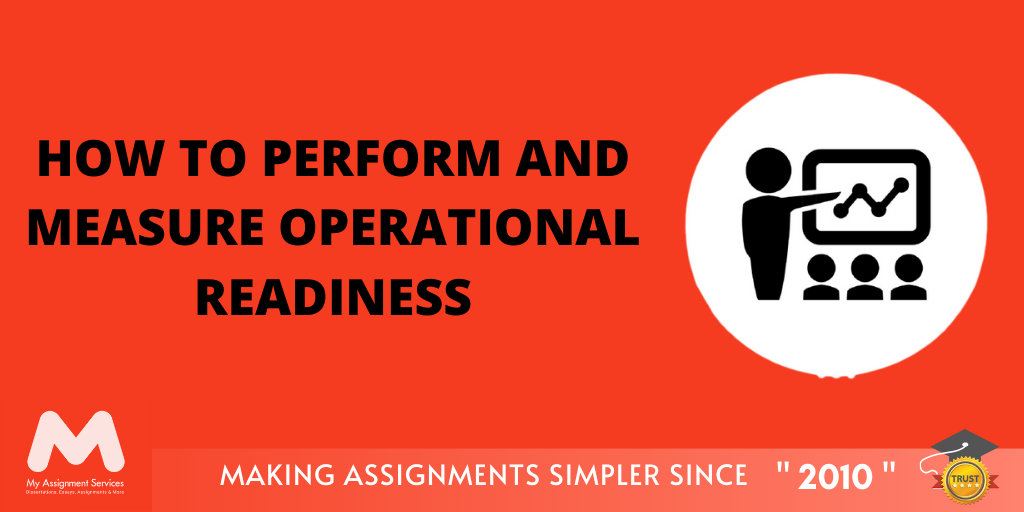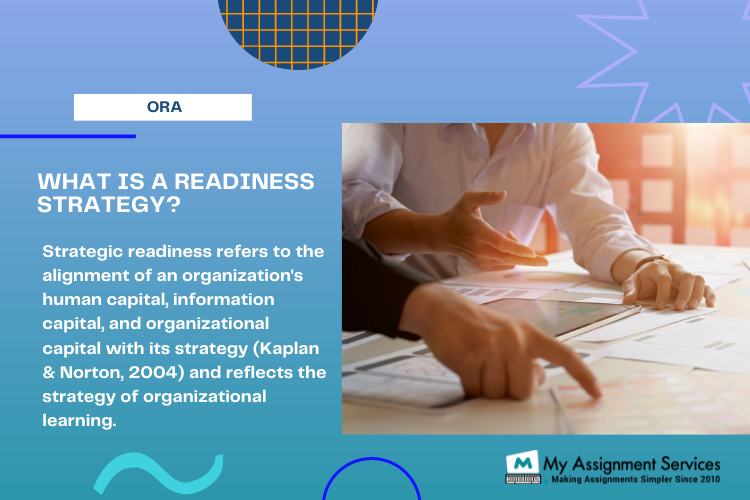
An Operational Readiness Assessment (ORA) is a process of inspection, evaluation and testing that reviews the status of an organisation's readiness to accomplish its mission. The assessment is used to measure how ready an organisation is to perform specific tasks. Depending on the type of ORA, the review may focus on organisational processes or individual skills or knowledge required to accomplish assigned missions or tasks successfully.
When it comes to computer security incident response, a formalised methodology of evaluating a team's ability to handle a security incident has been lacking. While some groups have conducted post-mortem reviews after incidents have occurred, they have missed out on their chance to improve prior to another incident occurring, by which point it might be too late.

The goal of an ORA is to improve security by providing a means to identify gaps in the team's tactics, techniques and procedures (TTPs). The assessment also highlights discrepancies between how the team would like to respond to incidents versus how they are actually operating. After the decision has been made that an ORA should be performed, there are three primary areas where time needs to be invested before beginning review:
During all assessments, it is important to focus on the present and look at past activities. It is important for information sharing purposes during or post-mortem reviews that you include any lessons learned that were captured for future reference. This could include any documents produced as part of the review process, which will need additional protection.
It is important to have a baseline understanding of the team's current capabilities and operations. This can be accomplished by reviewing standard operating procedures (SOPs), process flows, running books, and checklists.
Interviewing key personnel is also critical in order to get a better understanding of how the team operates. Questions should be tailored to specific areas such as the following:
After gaining an understanding of the team's response capabilities and limitations, you can begin reviewing their procedures. As part of this process, all team members should review available documentation to ensure accuracy and reflect the current state of incident response activities. Where discrepancies are found between how a task or activity is documented and how the team says they actually conduct it, those items should be identified in order to identify areas for improvement. For instance, if an organisation has not performed a proper risk assessment, the ORA would highlight this along with recommending corrective actions that need to be taken by the team.
After having assessed an organisation's readiness capability several times, you may find certain things are preventing them from being more effective at their job function. Examples of these include access restricting who can perform certain tasks or lack of policies and procedures. A lack of standardisation or synchronisation can also be an issue, where team members are working on different tasks or in different ways instead of collaboratively.
In order to improve the effectiveness of a team, it is important that these deficiencies be addressed. This means taking corrective action such as implementing new policies and procedures, providing training to team members on how to execute their tasks better, or revising access controls so that only authorised personnel can perform critical tasks.

It is also important that you track the progress of the team after corrective actions have been taken. This can be done by conducting another ORA after a set period of time has passed or by using other methods such as checklists or scorecards.
An organisation's readiness for an incident can be assessed in 5 key areas: People, Processes, Procedures, Technology and Tools. Each of these areas is important and should be considered when determining if an organisation is ready to respond to an incident.
People are the individuals who make up the team and are responsible for responding to incidents. It is important to ensure that they have the skills and knowledge necessary to do their job. In addition, it is also important to ensure that they have the proper tools and equipment needed to respond to incidents effectively.
Moreover, our mentors who provideassignment help in UKthrough live sessions say that processes are the steps taken to respond to an incident. These include the initial steps taken as well as the actions that are taken during the response. It is important for these steps to be clearly understood by all team members and that there is a standardised way for performing them.
Procedures are the formal set of instructions regarding how an incident response should take place. It is important to ensure these procedures are clear, concise and current, as older versions may not reflect the current state of incident response activities. Having policies and procedures in place helps ensure consistency among team members, reducing hindsight bias when responding to incidents.
Technology refers to the tools used in order for the team to respond effectively. These include things such as ticketing systems, monitoring consoles, documentation repositories, and other tools that help improve efficiency or effectiveness during an incident. In addition, it might also mean that they have been configured specifically for generating, sending and maintaining alerts.
Tools are the actual tools used by team members to perform their roles during an incident response. These include things such as a laptop, mobile phone, access controls, and other equipment needed during the process. It is important to ensure that these tools have been properly tested and validated before being adopted into use by a team.
Since each of these elements should be included in the assessment of readiness, it is best practice to conduct separate assessments for people, processes, procedures, and tools instead of doing one big assessment covering all areas at once. In addition, it may be necessary to conduct additional or follow-up assessments if corrective actions or improvements have been taken after initial assessments were conducted. For example, if there was a lack of process understanding, a follow-up assessment may be conducted to ensure that the steps have been properly understood and that they are being followed.
An organisation's readiness for an incident can be assessed in 5 key areas: People, Processes, Procedures, Technology and Tools. It is important to ensure that each of these areas is considered when determining if an organisation is ready to respond to an incident. Each of these areas should be assessed separately in order to get a better understanding of where improvements need to be made. In addition, it may be necessary to conduct follow-up assessments if corrective actions or improvements have been taken after initial assessments were conducted.
If you are looking for assignment help UK for your operational readiness assessment, there is no better place than My Assignment Services. We have native subject matter educators to help you submit high-quality work written exactly according to the marking criteria and task instructions. Enrol on our 1:1 session now just byfilling up the form.

Hello! I am Cloe Book, an English literature student and work as a part-time professional writer and a consultant. My skill is to make compelling narrative and critical analysis to help students gain good grades while learning to develop their Essay writing skills.
1,212,718Orders
4.9/5Rating
5,063Experts
Turnitin Report
$10.00Proofreading and Editing
$9.00Per PageConsultation with Expert
$35.00Per HourLive Session 1-on-1
$40.00Per 30 min.Quality Check
$25.00Total
FreeGet
500 Words Free
on your assignment today
Trending now
The Student Corner
Subscribe to get updates, offers and assignment tips right in your inbox.
Popular Posts
Popular Posts
Request Callback
Doing your Assignment with our resources is simple, take Expert assistance to ensure HD Grades. Here you Go....
Speak directly with a qualified subject expert.
Get clarity on your assignment, structure, and next steps.
In this free session, you can:
Loved reading this Blog? Share your valuable thoughts in the comment section.
Add comment